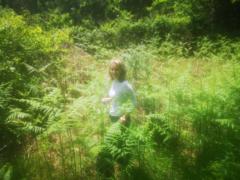Jun 25 • General discussion
THE PROCESS OF EMOTIONAL INTEGRATION: A PATH TO REALISATION
THE PROCESS OF EMOTIONAL INTEGRATION: A PATH TO REALISATION ( Patrick Boulan)
When we face a difficult situation, a challenge, or a conflict, and this situation brings forth strong emotions or feelings within us, along with a high level of inner turmoil, it's most often because our nervous system reactivates energy charges corresponding to old, unintegrated emotions.
When the nervous system activates in this way, it operates in "survival" mode, locked into its automatic response mechanisms to the perceived threat (primary responses are fight or flight, then the system freezes if we can't implement either of these options). In this activation, the intensity of the energy is so strong that it leads us to regress into older parts of our psyche – those wounded parts connected to the unresolved emotions we are experiencing – and to behave as if what these wounded parts perceive is reality.
As long as we remain in this state of identification, we are trapped in cycles of action and reaction, where everything we do aims to suppress the activated emotions and feelings. Furthermore, identification leads us to believe that our emotions tell us something true about the situation (and for the mind, this can only be true since our feelings confirm it). As a result, the thoughts and emotions loop remains constantly activated and continues to fuel the emotion with energy, maintaining the system's activation. This prevents us from gaining the necessary perspective to recognise that the emotion speaks of the past, not the present situation.
When these emotions don't activate, they remain latent, as if hidden, lodged in our body and energy system in the form of charges, tensions, and contractions. They will crystallise even in our cells, which then reproduce with this energetic imprint, thus transmitting traumatic memories from generation to generation.
Generally, we are so invested in the activity of thoughts and in maintaining our personality structure that we don't consciously feel these emotions and feelings. Yet, we have an intuition of their Presence, as thought constantly processes this information, seeking its resolution in our relationship with the outside world. However, we often remain terrified at the idea of engaging with them, imagining that delving deeply within ourselves will awaken something bad and dysfunctional, causing us to sink or annihilate ourselves. These fears keep our attention fixed on the periphery of our Being: in the mental activity that creates and maintains the sense of personality and in the construction of the innumerable strategies and mechanisms that this personality generates to try to compensate for or keep all these memories at a distance.
Without judging ourselves for these mechanisms, we can see that continuing to suppress emotions keeps them locked away within our system. Resistance only keeps blocking the very things it seeks to eliminate. However, what these emotions truly need is to be finally freed. We can only free them if we choose to recognise them, then lift the lid of resistance and finally welcome them. It is only when they are bathed in the light of our consciousness that they will be able to regain their capacity for movement, release, and ultimately transform.
To understand this process, imagine a small child struggling with a complex emotion. They certainly don't need an adult at that moment who judges them, rejects them, and makes them understand that they shouldn't feel what they're feeling or that they must change immediately. Such an attitude would only reinforce the state of shock the child is in, thus intensifying their difficulties. On the contrary, what the child needs at that moment is a benevolent adult who, with love, makes them understand that it's normal to feel what they're feeling, that it doesn't mean anything negative about them, and that it's simply a natural human reaction to a given situation. In other words, the child needs the adult to validate their emotion so as not to have to dissociate from it. They need the emotional proximity of a nurturing and loving adult who can stay with them until this emotion passes.
Applied to our inner experience, this metaphor allows us to understand what attitude we can try to adopt to be in contact with these emotions: we must become the loving parent that the child didn't have at the original moment when the emotion crystallised and kindly welcome the experience that this emotion, as well as the parts of our psyche linked to it, invite us to live.
When we welcome the experience that animates us and give it space, the blocked energies and emotions will be able to regain their momentum and follow the path they need to take. In this openness, the nervous system can exit its state of shock and activate its capacity for resilience, ultimately integrating the original experience. The emotion then naturally transforms and releases.
The patterns of thoughts and beliefs built around the part frozen in the emotion will then dissolve, freeing us from the part of the personality or ego structure that is built around strategies of resistance to emotion. The interpretation that our thoughts make of our environment (inner and outer) through the prism of emotion will also transform, allowing us to perceive things with greater clarity and simplicity.
At this moment of the process, we free our attention from the considerable activity that was in place to feed the strategies that sought to resist or compensate for the emotion. This opening of our attention allows us to feel the space of our Being and to taste its qualities, which, until then, had obscured the wounded parts.
In this space, we realise much more easily that emotions (pleasant or not) are just a movement of energy within our Being. We perceive this movement through sensations. We see that we are there before the movement, during it, and still after, but the movement does not define us. The opportunity thus presents itself to gain a glimpse of our deep nature and to experience the Presence that we are beyond identification with thoughts and identity.
Each time we repeat this process, our confidence grows in our ability to feel the movements or contractions that pass through us and to allow things to transform naturally. The more this confidence develops, the more the level of conflict we maintain with our experience diminishes. The more we can experience the natural peace that resides at the heart of our Being: a peace that is neither manufactured nor the result of control, but which is the consequence of our absence of conflict with experience and our capacity to remain open and present with what life invites us to experience at every moment.
Presence is the fruit of this openness.
8
5 comments

skool.com/shangriballa
Join our free non-dual community to connect with a global family of seekers. Discover your inner guru and integrate spiritual wisdom into your life.
Powered by





